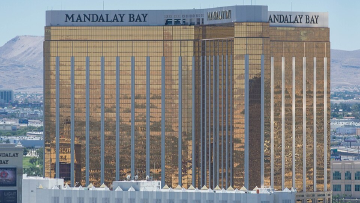Why indoor positioning needs a rethink and how our patent delivers it

Why indoor positioning needs a rethink and how our patent delivers it
1. The everyday problem
GPS is brilliant in the open air, but the moment a roof or thick walls get in the way its signals fade. Warehouses, exhibition halls, hospitals and shopping centres all need precise “blue-dot” positioning indoors, yet most solutions on the market still struggle to deliver it reliably.
2. Replacing satellites indoors
Outdoors, your phone talks to at least four GPS satellites to triangulate its position. Indoors we have to swap those spacecraft for something we can bolt to a wall: fixed anchors that keep broadcasting a tiny radio “ping.” The most affordable, battery-powered option almost every phone can hear today is Bluetooth® Low Energy (BLE).
The wrinkle is that BLE wasn’t designed as a tape-measure. Inside a building the received signal strength — the little bars your phone sees — swings wildly: people walk past, a forklift parks in the aisle, the air-conditioning kicks in. The same beacon that read –68 dB an hour ago may show –80 dB now, even though you haven’t moved. Engineers call this multipath fading and it makes a straight strength = distance equation hopeless.
The traditional workaround is to accept the chaos and learn it instead. Teams walk the venue taking thousands of readings to create a “fingerprint” map that says, “If you ever smell –75 dB from beacon #12 and –84 dB from #23, you’re probably by the fire exit.” That brings us to the next section…
3. How most systems try to cope (and why that’s painful)
The dominant approach today is RF “fingerprinting.” A technician walks every corridor with a phone, capturing the unique radio-signal “smell” at each spot. The result is a huge lookup table that a visitor’s phone can query later:
- Labour-intensive – every metre of floor space must be surveyed.
- Fragile – move a metal rack, change the Wi-Fi, or add Christmas decorations and you need a fresh survey.
- Device-dependent – different handsets read the same signal differently, so “calibration” never really ends.
4. A fresh perspective: our Anchor-Shift Fusion™ method
(Granted UK Patent GB 2614583B)
Instead of memorising the radio landscape, we combine two things your phone already senses:
- One-off snapshots of signal strength to fixed “anchors.”
Example: Bluetooth beacons or ultra-wideband tags mounted around the building. - The phone’s own motion sensors (accelerometer & gyroscope) that whisper “I just moved two steps to the right.”
The clever bit is what happens next:
- We open a time window (say 10 seconds) around the moment we want to know your position.
- Every anchor measurement inside that window is adjusted (or “shifted”) by the distance your phone has moved since the measurement was taken.
- After this simple shift, we treat all the measurements as if they were taken right now and solve the position in one go.
Think of it like pointing a camera at moving targets but digitally rewinding each photo so the background lines up before stacking them for a crystal-clear picture.
Why stretch that window to a leisurely 5–15 seconds instead of freezing time? Two reasons. First, packing more anchor observations into the window gives the optimiser in the next step enough data to work robustly. Secondly, because those observations come from slightly different places and moments, they capture the spatial and temporal ripples in signal strength. Averaging across that variation filters out the random fades and spikes that would otherwise mislead the algorithm.
Next comes an optimiser that treats several quantities as unknown and estimates them on-the-fly — the phone’s absolute heading, your average step length during that window, and a path-loss exponent that captures how quickly Bluetooth power is fading in this environment right now. By re-estimating those numbers every few seconds, the engine performs a quiet, continuous self-calibration. Changes in crowd density, humidity, or a newly installed steel shelf are absorbed automatically, with no technician ever having to revisit the site. That rolling recalibration is fundamentally different from fingerprinting, which freezes signal behaviour in time and degrades from the moment the surveyor leaves.
5. Why this beats fingerprinting (and other methods)
| What matters to you | Fingerprinting | Anchor-Shift Fusion™ |
|---|---|---|
| Set-up time | Days or weeks of site walks | Minutes to stick up beacons |
| Upkeep | Resurvey after every layout tweak | No resurvey ever needed |
| Accuracy | Degrades with crowds & refurbishments | Consistent accuracy |
| Device range | Needs per-model calibration | Works across any iOS & Android device out of the box |
| Scalability | Effort grows linearly with floor area | Same algorithm everywhere |
| Privacy | Stores a radio “fingerprint” of the building | Only uses anonymous sensor data |
Additional wins:
- Future-proof – if tomorrow’s phones support new ranging tech (e.g. UWB), we simply add those anchors; the patent’s maths already allows mixed sensors.
- Resilient – even if a beacon fails, motion data bridges the gap until the next anchor comes into view.
6. What it means for your venue
- Plug-and-play deployment for temporary events (think pop-up exhibitions).
- Lower total cost of ownership because surveys and resurvey disappear.
- Happier visitors who get turn-by-turn guidance that just works.
Patented technology: GB 2614583 B “System and Method for Positioning”, granted 28 Feb 2024. Comparison data reflects internal testing and publicly documented limitations of RF fingerprinting.


